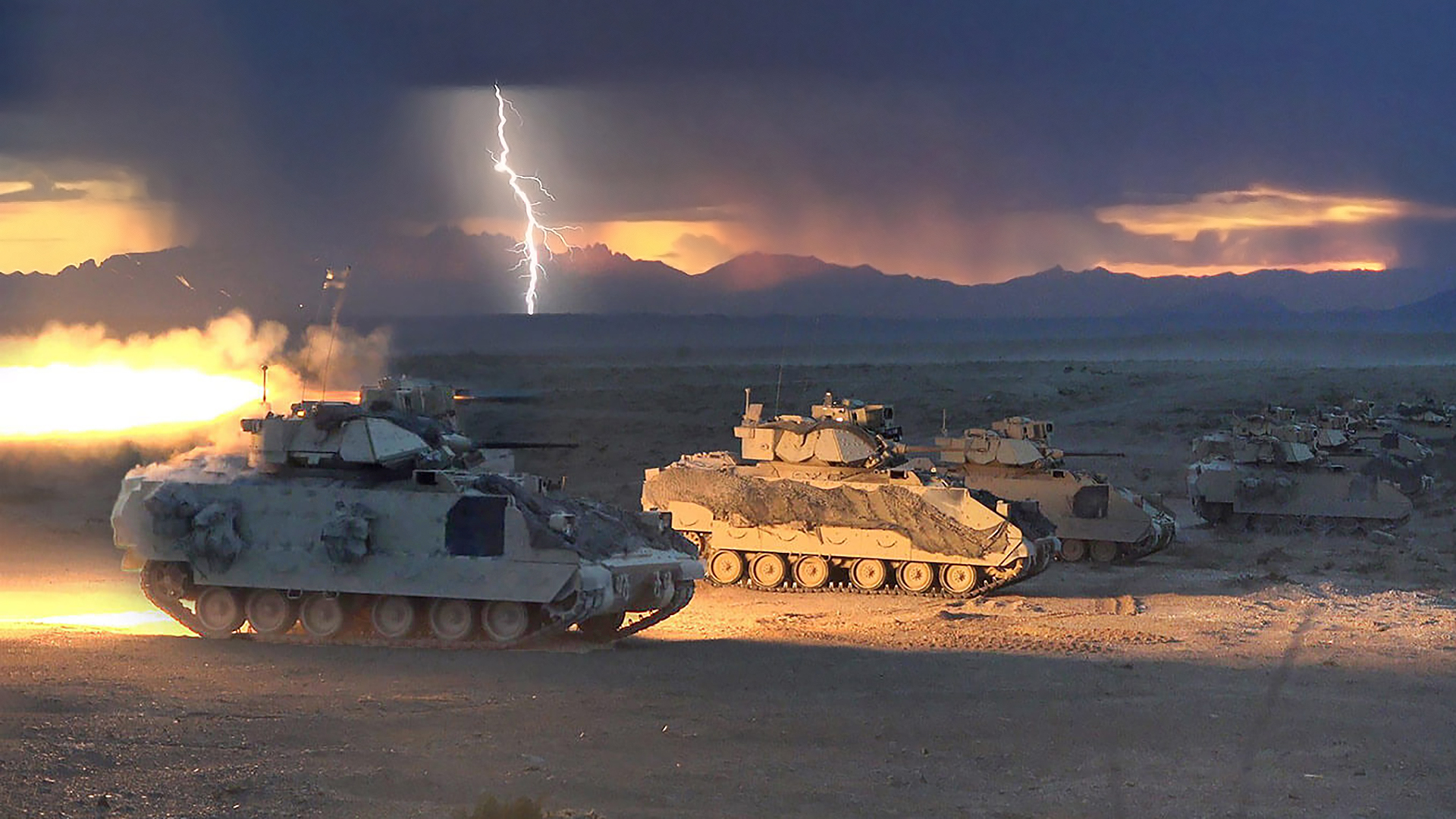During what would become known as the Battle of 73 Easting in Iraq during Operation Desert Storm (ODS) in 1991, Staff Sergeant David Lawrence, commanding an M2 Bradley Fighting Vehicle, gave the order to shoot at a target with its Tube-launched, Optically-tracked, Wire-guided (TOW) tank-busting missile.
Less than a half-minute later, the turret of an Iraqi T-72 – variants of which Russians are currently using three decades later in Ukraine – was ripped from its hull in the ensuing explosion, according to an account by now-retired U.S. Army Lt. Gen. H. R. McMaster, a captain at the time of that battle.
“Three Bradleys from first platoon, led by Lieutenant Michael Petschek, encountered and destroyed four T-72s,” McMaster wrote on Feb. 26, 2016, recounting that battle on its 25th anniversary.
Nearly a year after 73 Easting, the Government Accountability Office would largely praise the ODS performance of the Bradley, the same vehicle that President Joe Biden said will be going to Ukraine on Thursday.
More than three decades later, 50 Bradleys will be part of a tranche of western armored vehicles, which also includes French AMX-10 RC heavy armored cars and German Marder 1 infantry fighting vehicles, that will now be heading to the embattled country. This is part of a coordinated effort to finally address Kyiv’s longstanding request for modern western heavy armor. The Bradleys are part of a new military aid package that the U.S. government formally announced just today, which also includes 500 TOW anti-tank missiles and 250,000 rounds of 25mm ammunition specifically for those vehicles, among other things.
One Bradley expert we spoke with said the firepower, maneuverability, and durability the Bradley exhibited at 73 Easting and during Operation Iraqi Freedom over a decade later are exactly what Ukraine needs as it contemplates further offensives against a foe that still has a sizeable amount of Soviet-era tanks and other armor, as well as its more modern vehicles. Despite its successes, after more than 10 months of war, the Ukrainian Army is in need of armor of all kinds. The Bradley would help Ukraine move troops safely in high-risk areas while offering a platform with robust anti-tank and anti-troop capabilities, the expert said.
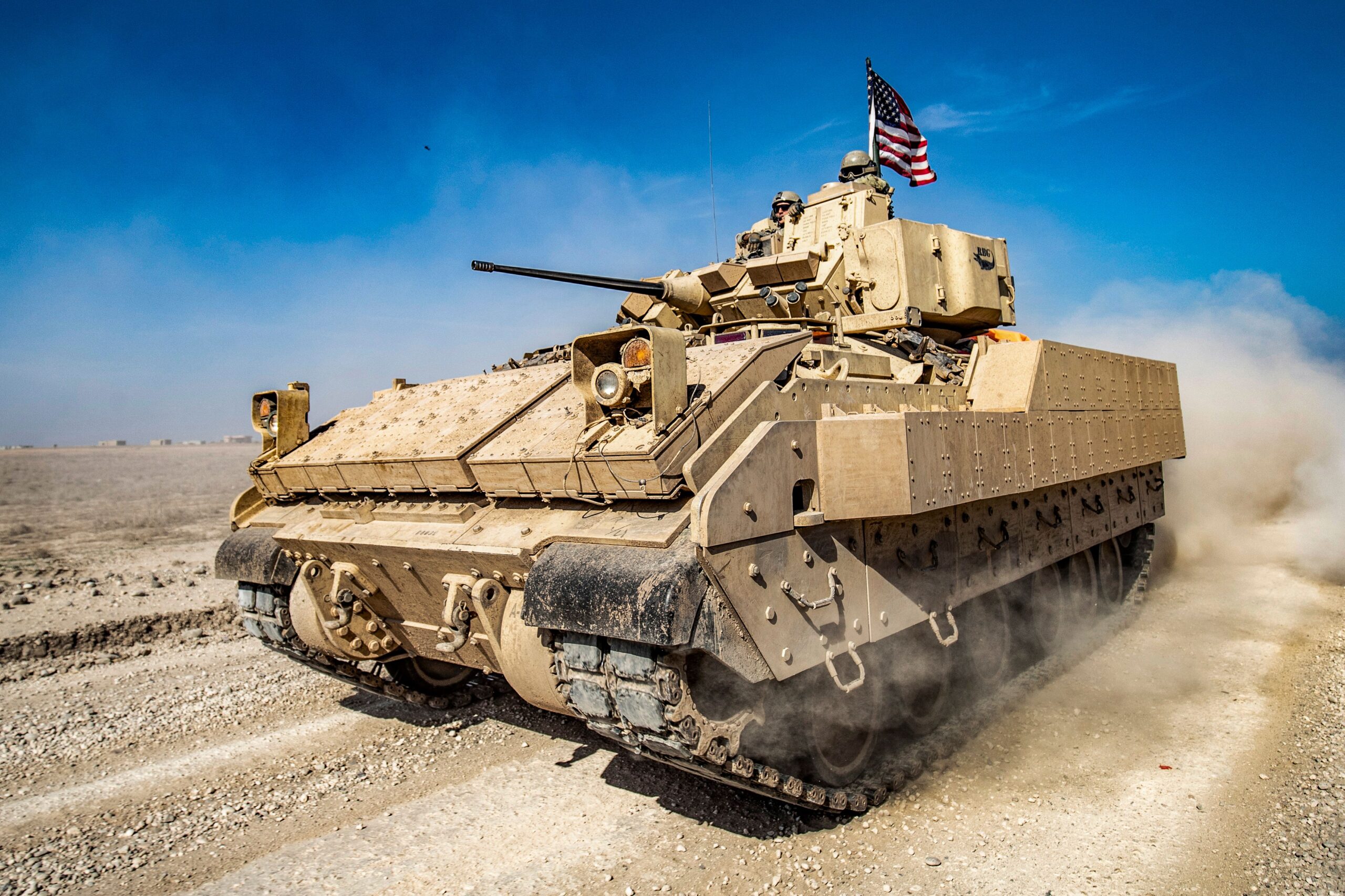
“The Bradley has proven, and would likely prove again, to be a dangerous weapon against Soviet-era armor, much like it had during the Battle of 73 Easting, the invasion of Iraq during Operation Iraqi Freedom (OIF) as well as against Russia’s more modern tanks,” said the expert, a veteran Bradley master gunner who spoke on condition of anonymity to discuss the vehicle’s attributes.
Meet Bradley
While it is unknown at the moment how the Bradleys heading to Ukraine will be outfitted, the M2A3 Bradley Fighting Vehicle, the second-newest variant of the more than 6,000 Bradleys fielded by the U.S. Army since 1981, is a 37.5-ton tracked armored vehicle that can be configured in a variety of ways depending on the need. For the U.S. Army, the Bradley provides cross-country mobility, mounted firepower, communications, surveillance, and protection to mechanized infantry when mounted and direct support for dismounted troops.
It has a crew of three, and room for six to seven troops (our expert confirms it can hold six comfortably).
Its primary weapon is the Bushmaster M242 25 mm automatic cannon. It’s also armed with a 7.62 coaxial machine gun and a dual-tube BMG-71 TOW (Tube-Launched, Optically Tracked, Wireless-Guided) missile launcher.
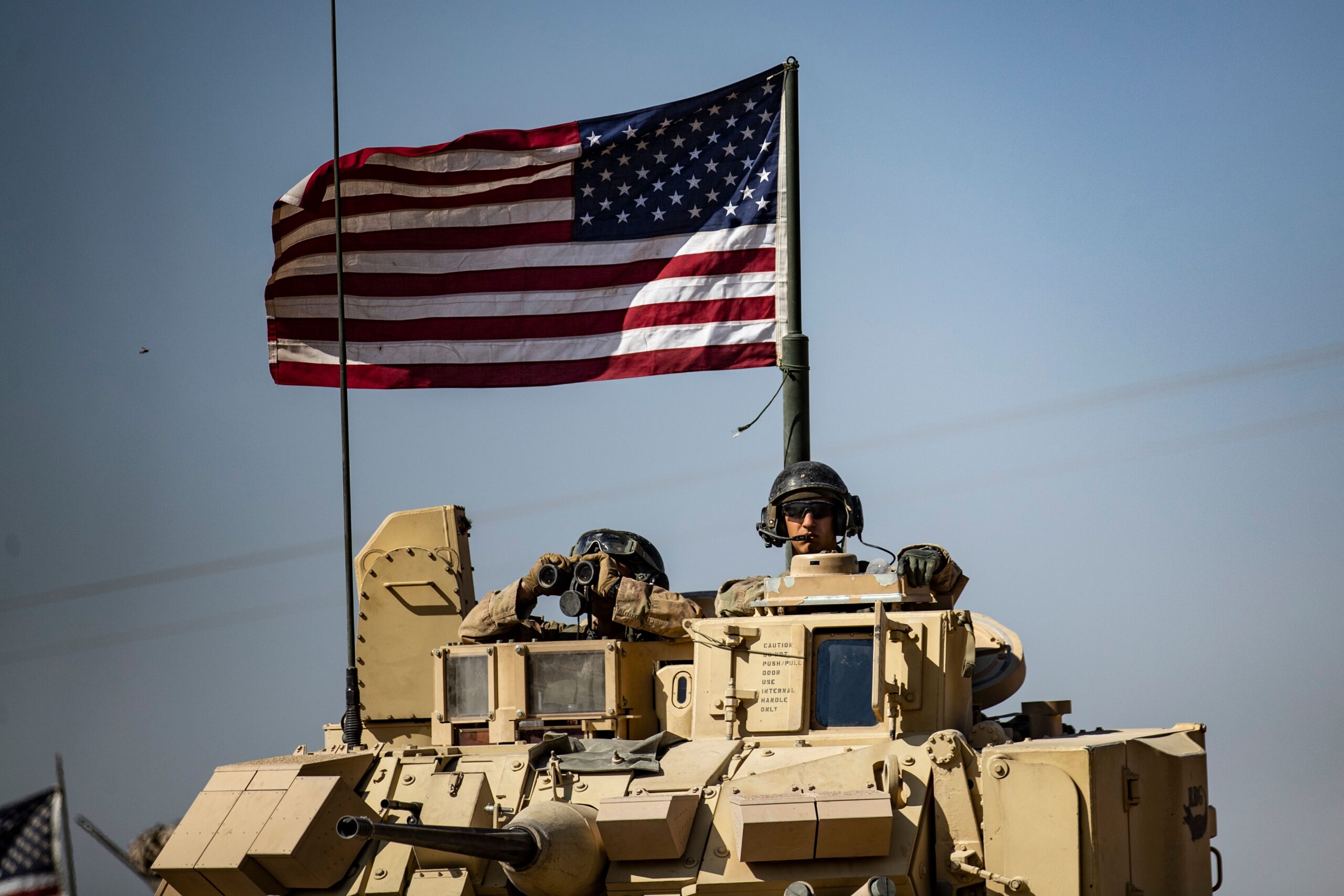
The Bradley M2A3 variant has a digital command and control system for weapons employment and situational awareness, network connectivity, and the ability to communicate within the Armored Brigade Combat Team. Bradley also has multiple sight sensor systems, with the ability for its operators to see during the day and at night, including via a thermal vision system, and do so over extended distances. It can be equipped with explosive reactive armor for extra protection, a configuration we could see in Ukraine.
It has an eight-cylinder 600 horsepower diesel engine, a top speed of 38 miles per hour, a range of 250 miles, and can fit into C-5 and C-17 transport jets.
There are currently three operational Bradley variants, our expert tells us.
- The Infantry Fighting Vehicle
- The Cavalry Fighting Vehicle, “which has fewer seats in the back and more missiles storage”
- The Bradley Fire Support Team (BFIST) vehicle, a scout, reconnaissance, and targeting variant, “which is [a] fire support vehicle with an FS laser designator and fires computer instead of a TOW”

The U.S. has also sold Bradleys to Lebanon, Saudi Arabia, and Croatia.
Tough Start, Better Finish
The Bradley, which first entered U.S. Army service in the early 1980s, was lambasted in the 1993 book (and subsequent 1998 movie) The Pentagon Wars: Reformers Challenge the Old Guard, as an example of all that is wrong with U.S. military procurement policies.
“A troop transport that can’t carry troops, a reconnaissance vehicle that’s too conspicuous to do reconnaissance, and a quasi-tank that has less armor than a snow-blower, but carries enough ammo to take out half of D.C.,” is how author James G. Burton described the Bradley. Burton, a former Air Force colonel who spent 14 years as a Pentagon specialist in weapons acquisition and testing before his retirement in 1986, oversaw the Bradley’s initial evaluation.

But despite early concerns, raised in the book, about it being a death trap, the Bradley was praised by crews who used it during ODS for its lethality, mobility, safety, and endurance, according to the GAO. The Congressional watchdog noted that earlier concerns about crew safety were addressed before they were pressed into service in Iraq.
“The Bradley Fighting Vehicle performed well during the war, according to the observations of commanders, crews, maintenance personnel, and Army after-action reports. It exhibited good reliability, lethality, mobility, and range, and crews perceived the A2 model to have good survivability. The Army reported readiness rates for the Bradley that were generally 90 percent or higher during the ground war-indicating its high availability to move, shoot, and communicate during combat. The Bradley proved to be lethal, as crews reported that its 25-mm automatic gun was effective against a variety of targets and that its Tube-Launched, Optically-Tracked, Wire-Guided (TOW) missile system was able to destroy tanks. Crews also said the Bradley was fast, maneuvered well in the desert terrain, and exhibited good range. The A2 high survivability model Bradley was praised for its added engine power and maneuverability, and crews felt safer with its increased armor protection.”
The report elaborated on the 25mm gun’s ability to take out tanks.
“The Bradley’s weapon systems proved to be lethal and effective against a variety of enemy targets,” according to that report. “Commanders, crews, and officials from the Center for Army Lessons Learned (CALL) and the Army Infantry Center reported that the 25-mm automatic gun was a very versatile weapon. Crews we spoke with used the 25-mm automatic gun primarily for clearing bunkers and firing on lightly armored vehicles. While the 25-mm automatic gun is not the weapon of choice for engaging tanks, vehicle commanders, crews, and CALL and Army Infantry Center personnel reported isolated instances in which the 25-mm automatic gun had killed tanks.”
However, officials from the Army Materiel Systems Analysis Activity (AMSAA) also said that, on the basis of their ongoing assessment of combat vehicles in the Persian Gulf war, for the 25-mm automatic gun to kill a tank, “the tank would have to be hit at close range in its more vulnerable areas. The Bradley’s TOW missile system was lethal at long ranges against all forms of enemy armor, such as tanks, with few missile failures reported.”

As noted, the Bradley proved to be quite resilient in ODS.
The Army reported that of the 1,730 Bradleys sent to deployed units during ODS, only 20 were destroyed – 17 of them by friendly fire.
Another 12 Bradleys were damaged, but four of these were quickly repaired. Three of those were damaged by friendly fire.
More than a decade later, during Operation Iraqi Freedom, the Bradleys fought during the initial invasion and during the early stages of the war, taking part in tough urban battles in cities including Baghdad, Najaf, and Al Thawra (also commonly referred to at the time as Sadr City). They faced a tougher challenge in rocket-propelled grenades and improvised explosive devices, with one report saying that between 55 and 150 Bradleys were lost in operations. However, personnel losses were light because they were generally protected and able to exit the struck vehicles.
“By 2010, slat armor and ERA packages made their way on the Bradleys maintained in service, with good results,” according to tanks-encyclopedia.com. “But the bulk of the fight was now in the hands of the 12,000 MRAPs fielded with proven V-shape bellies, as for the modified Strykers.”
The Bradley, as we mentioned earlier, received significant modifications after ODS. They included an eye-safe laser range finder, GPS-navigation system, an infrared imaging system for the vehicle’s driver, a computerized battle management system, and other upgrades. These upgrades have continued over the years, now culminating in the M2A4 version the service began fielding in April 2022.
The design could evolve even further, but an initiative to eventually replace the Bradley is currently underway.
Still, “Current projections indicate the Bradley Fighting Vehicle and the Bradley Fire Support Vehicle will remain in the Armored Brigade Combat Team (ABCT) formation until the 2050s,” according to the Army’s Fiscal Year 2022 Budget Justification book, issued in May of 2021.
What Bradley Can Bring To The Fight
A Ukrainian defense and security expert in Kyiv on Thursday told The War Zone that the Bradleys would address Ukraine’s “lack of maneuverability and personnel transportation to the battlefield.”
Ukraine, whose leaders have promised a future offensive to liberate Crimea, are looking to the Bradley “to increase combat resistance and troop survivability, and improve operational tempo and maneuverability by delivering troops into the hot spots.”
The Bradley provides “an armored capability that can transport mechanized infantry into battle in support of both offensive and defensive operations, providing a level of firepower and armor that will bring advantages on the battlefield,” Air Force Brig. Gen. Pat Ryder told reporters, including from The War Zone, during a Thursday media briefing.
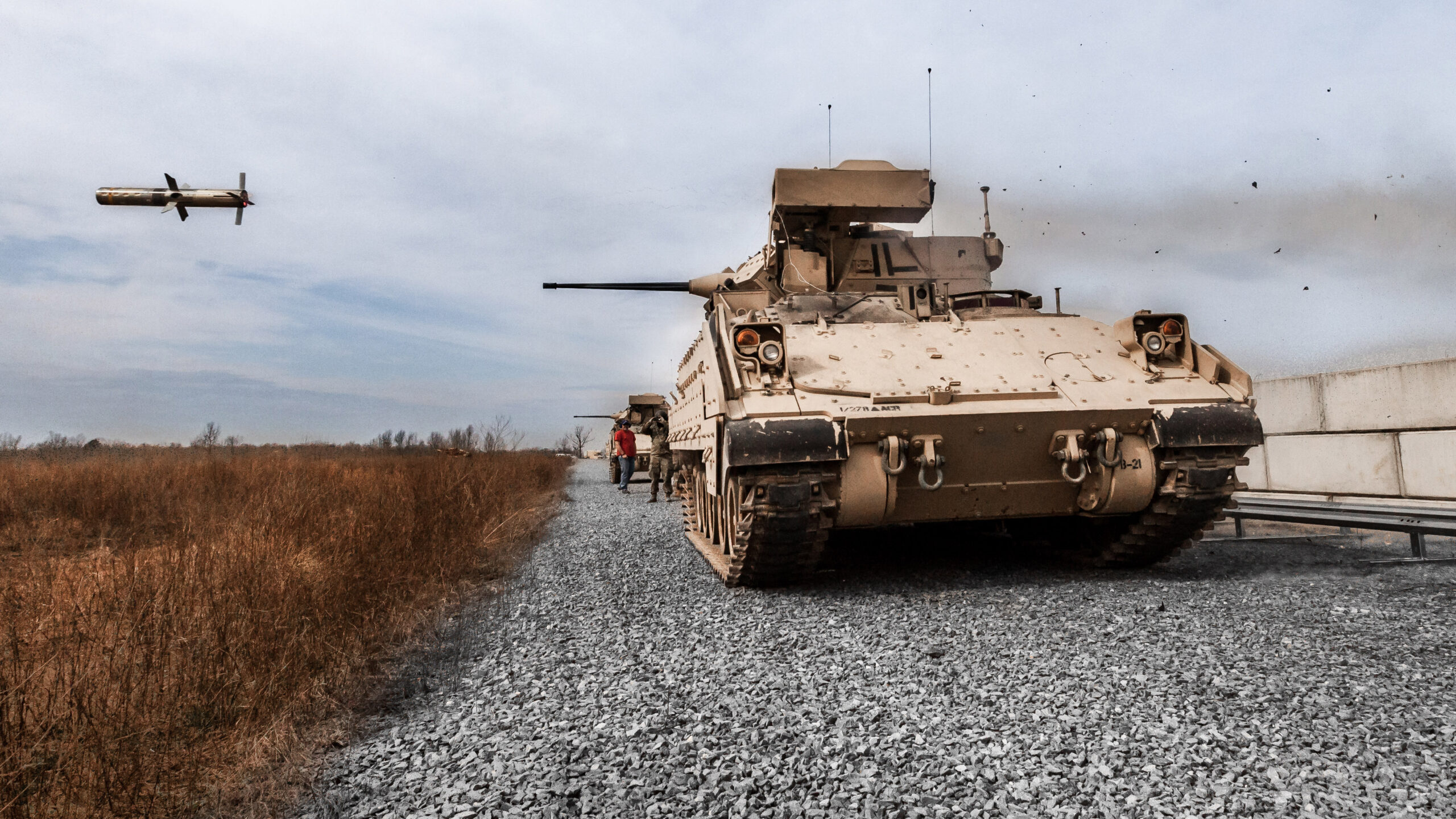
The Bradley expert we spoke with was extremely enthusiastic about how much the vehicle will help Ukraine, based on his own experience with the U.S. versions.
“I love, love, love that they are getting them,” he told The War Zone. “It’s a fun and capable mobile home to say the least. It is a die-hard little machine if you know what you’re doing with it.”
The several variants of the TOW missile give Bradley crews a variety of options for using it as a strike vehicle, he said.
“The bunker buster TOWs are very good obstacle and emplacement reduction munitions,” he said.
The TOW 2B Aero missile, originally known as the TOW 2B Extended Range, can hit enemy tanks and other targets out to around 4,500 meters, or just under 2.8 miles, according to the Army.
“TOW 2Bs speak for themselves being a fly over- blow down warhead,” said the Bradley expert. “They fly above the target and the warhead explodes down into the most vulnerable part of the tank – the top.”

The TOW 2As, which “hit the target directly on aimpoint, are still very capable direct-strike anti-tank guided missiles.”
The Bradley’s elevated optics platform adds to its effectiveness against tanks, said the expert, “by identifying the tank before it could see them.”
The TOW “also raises to shoot along the same line-of-sight as the optics, allowing the vehicle to fire it from a position of maximum possible cover,” he added. “When a Brad fires a TOW, the only thing that a tank might be able to score a hit on is the launcher itself.”

And “even in open terrain, since the M2 is designed with multiple redundant systems, you can hit it but that doesn’t guarantee you’ll disable it. Unless you kill a crew member it can probably still maneuver and fire at you.”
The 25mm Bushmaster main gun “gets discounted by many because it’s ‘smaller’ but it’s still a very capable gun with modern ammunition types, as displayed by performance in Desert Storm and OIF,” the expert said. “The gun itself is just as good as the TOW in certain situations against tanks.”
The expert is optimistic about how the Bradley would operate even in areas of Ukraine with wide open fields and lots of mud at this time of year.
“Mud sucks, no way around that,” he said. “And maintenance depends on training and which variant, really. Outside of being actually mired – like driving into mud or swamp over the tracks – I’ve usually been able to get out of the mud. The larger track profile/width helps a lot.”
As with any armored vehicle, “getting out of those wide-open fields is important,” he said. “It’s a 40- ton extension of the human body, it needs cover and concealment as much as a soldier does.”
But that, he said, is where the Bradley’s height – 130 inches – comes in handy as an advantage.
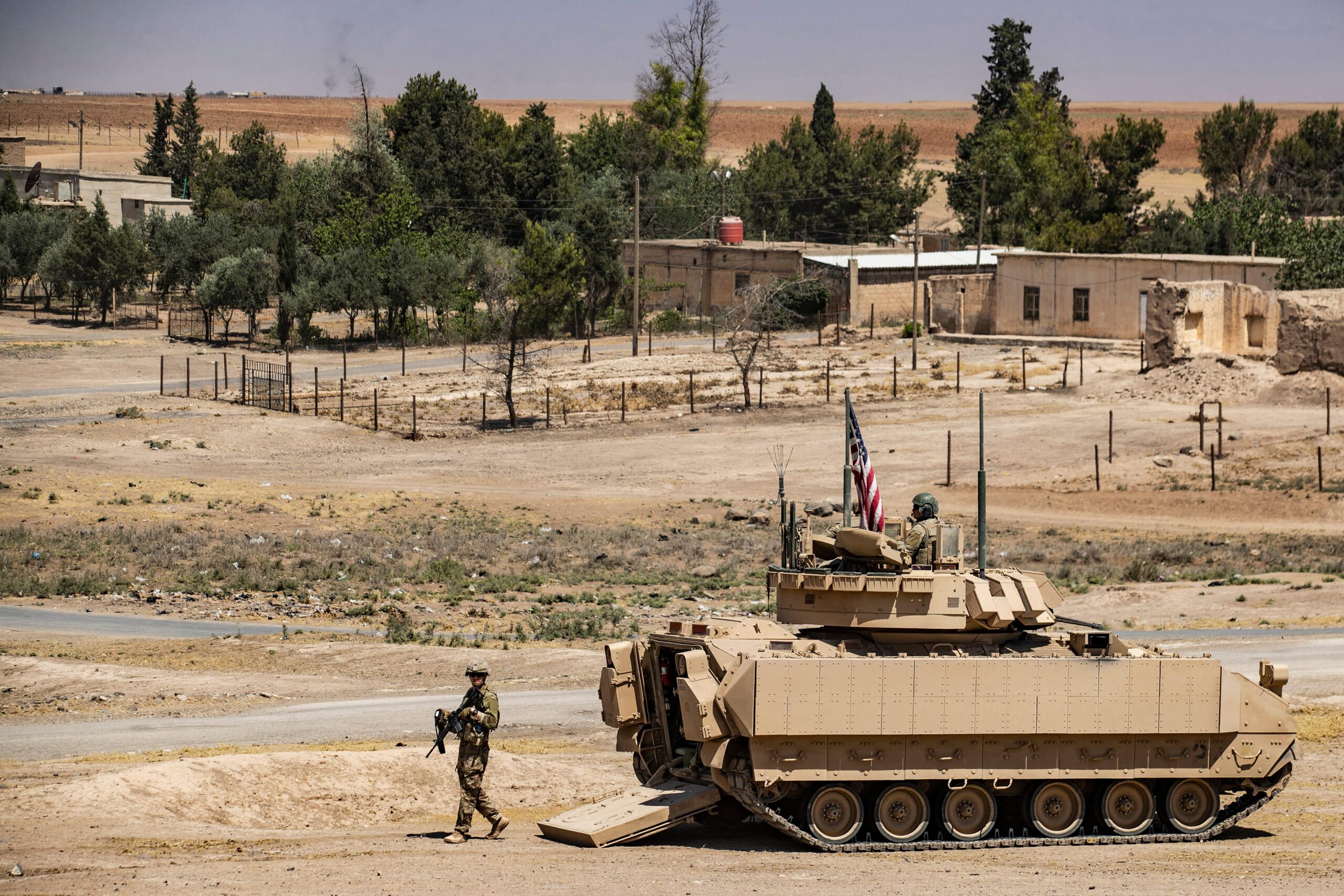
“Yeah, it’s obnoxiously tall on paper, but combined with concealment that gives you a line-of-sight advantage over a BMP in similar terrain. I move cover to cover in a Brad. Peek the sights over terrain and jump out to engage.”
Critics view the Bradley’s high silhouette as a weakness.
“It’s too tall, easy to spot, etc,” said the expert. “But that’s any vehicle in the open or unconcealed. If you put a Bradley in the right spot, the only thing seen is the sight housing on top. Everything else is concealed. You can stay behind very thick cover and concealment and still observe, and don’t have to expose a large part of the vehicle to engage.”
By comparison, a BMP is “very squat and compact, yes; but when you want to engage something, it’s squat stature turns into a disadvantage, because you’re usually having to expose parts of your hull to get your turret above cover.”
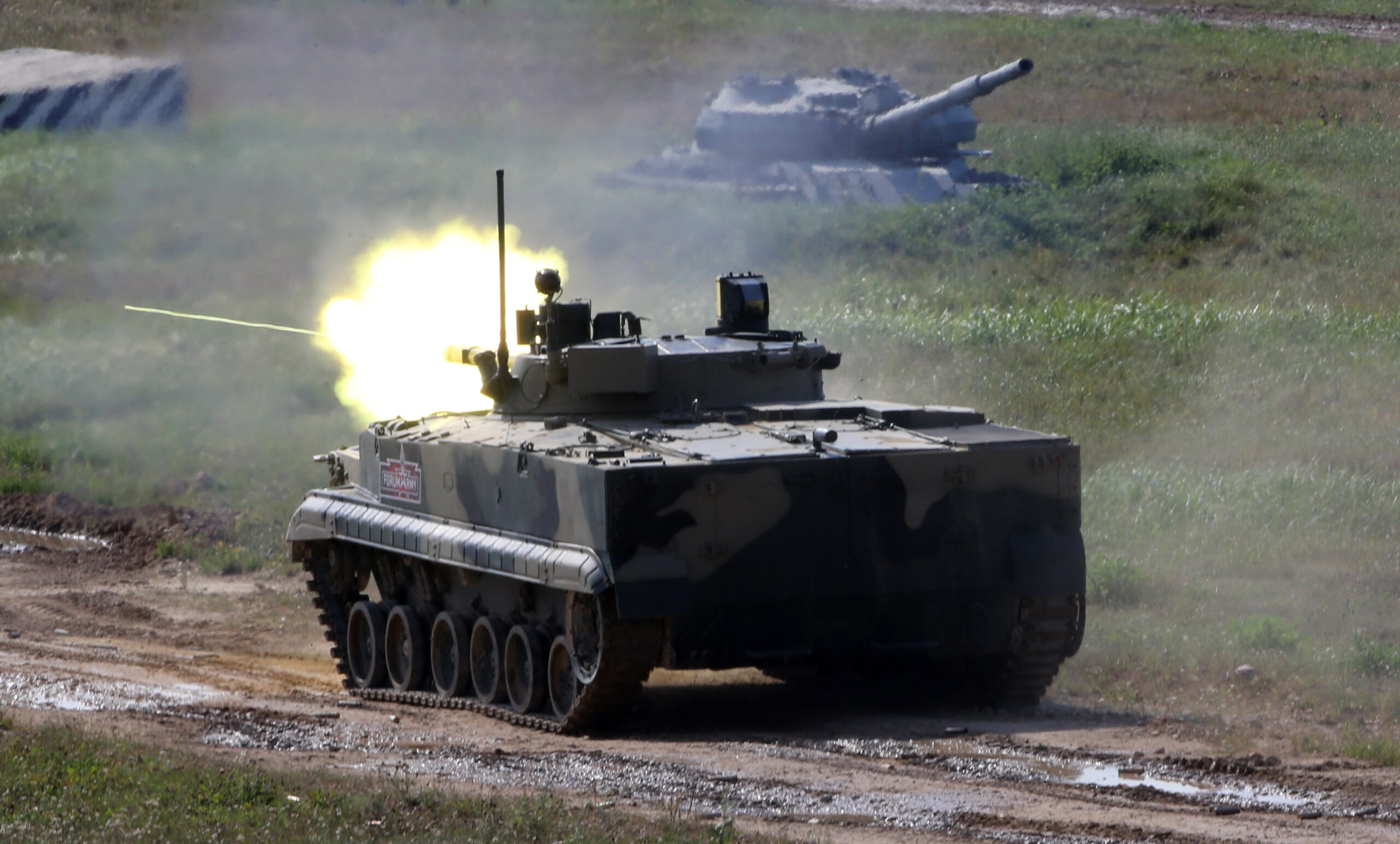
Speaking of BMPs, the expert said that the Bradley “was purpose designed to counter them. And counter a lot of them. For context, the Brad was designed during the era where the Soviets employed massive formations of armor where it would be facing at least a three-to-one disadvantage. Its design allows a crew to very quickly identify and engage other vehicles while having enhanced survivability using its redundant systems and crew layout and protection.”
The Pentagon Wars movie, “is a lie,” he added. “It’s irrelevant entirely to what the vehicle is actually meant to do. It was made and endorsed by enemies of the platform’s development and funding, so it’s heavily biased and misleading.”
Another source we spoke with was far less enthusiastic about providing Bradleys to Ukraine.
“We shouldn’t send a major end item like a Stryker or Bradley to a war zone for use by foreign forces. It takes years of training and experience to develop lethal crews,” said the source, a career mechanized infantryman with deep knowledge of the Bradley, who spoke on the condition of anonymity to discuss the vehicle. “Maintenance is a challenge in the best environments, with trained crews and mechanics. Without months of training and years of experience, those combat vehicles will be hulks sitting alongside the roadways in no time. It would be a huge waste to send those vehicles to the Ukrainians.”
Why Bradley Now?
When asked if the U.S. military was providing Bradleys now because of a potential future Russian attempt at a new offensive against Ukraine, Ryder, the Pentagon spokesman declined to look into a crystal ball. He said the timing was related to Ukraine’s increased ability to handle a system like the Bradley now, as opposed to the start of the all-out invasion last February.
“We’re at a point in this battle where we’re going to be able to provide that kind of training to enable Ukraine to sustain those kinds of systems so that they can focus on defending their country and taking back territory,” said Ryder. “Early in this campaign, when Russia was on the doorstep of Kyiv, it was a much different situation. Things like long-term sustainment and logistics would be a much more complex undertaking.”
Though there has been some discussion that providing Ukraine with Bradleys, Marders and the AMX-10 RC will pave the way for giving Kyiv modern main battle tanks, like the M1 Abrams, the expert said that’s a bad idea.
“Tanks are too heavy, consume too much fuel, and [are] very hard to maintain compared to the Brad,” he said. “Even on the more complex A3 Bradley variant, I’m only visiting a mechanic if I break something big. A tank like the U.S. M1A1 Abrams would put a strain on Ukraine’s logistics that it does not need in my opinion.”
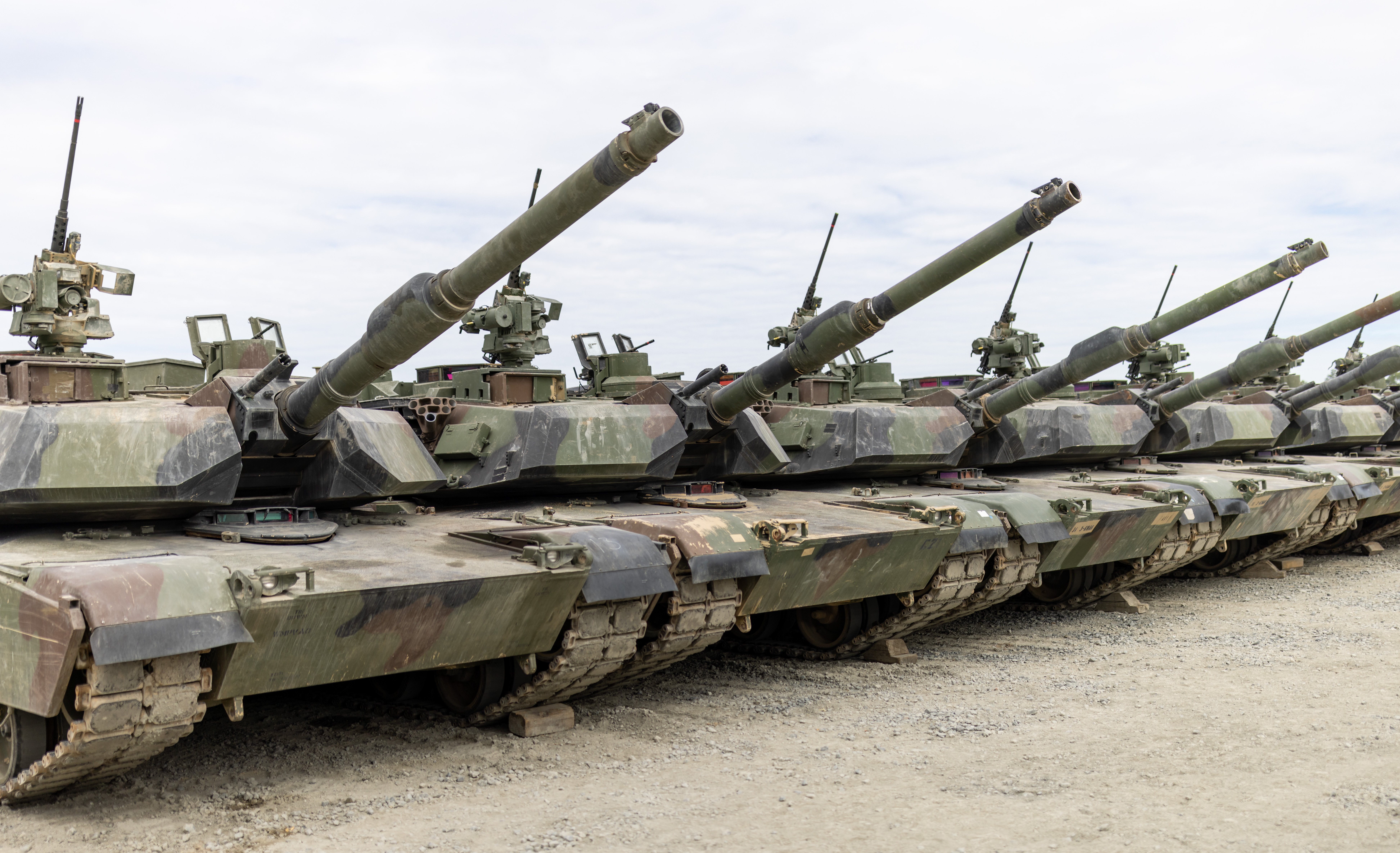
Despite those concerns, which have no doubt been pointed out to Ukrainians several times, Zelensky and his military are still pushing for more modern tanks. Whether that happens, and how effective that could actually be, remains to be seen. But it is something we will watch closely.
But one thing is very likely.
Much as they did during 73 Easting, the Bradley Fighting Vehicle should offer a significant boost to Ukraine’s troops by taking them where they need to be in a vehicle that has a track record of surviving combat against Russian-built tanks while delivering lethal blows to those same Russian-built tanks.
That capability, and the sudden move to supply Ukraine with modern western armor overall, could, above all else, become especially crucial in an operation to finally liberate Crimea. Over three decades after their combat debut, it very well could be that the Bradley leads the way.
Contact the author: howard@thewarzone.com
Update 6:30 PM EST:
We got a little more clarity Friday afternoon on which version of the Bradley the U.S. will provide Ukraine.
It’s the M2A2-ODS version, Air Force Brig. Gen. Pat Ryder, the Pentagon’s top spokesman, told The War Zone Friday afternoon.
That variant, an upgrade from the M2A2, was introduced to address some of the deficiencies that were found during Operation Desert Storm (ODS), from which it gets its ODS designation.
